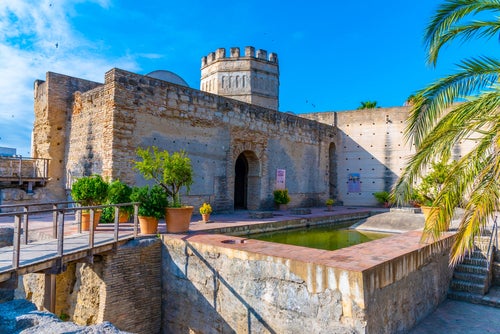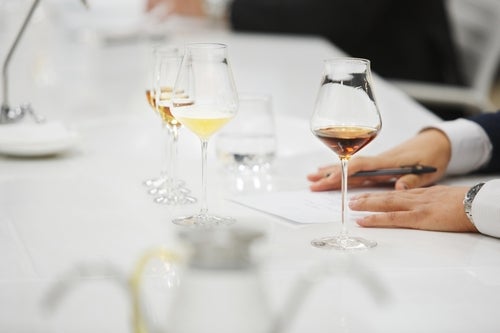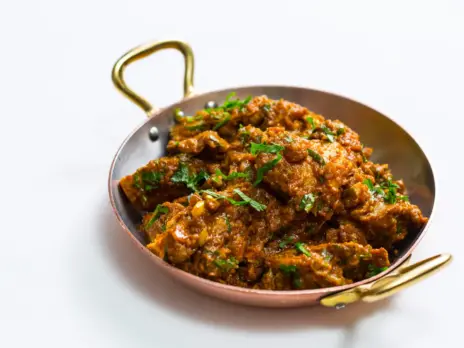
Thanks to a culture of progressive research, it may be that all is not yet lost for Gamay in a changing Beaujolais, says Paul White.
Grape growing has been climate change’s canary in the coal mine for decades now, especially the past 20 years. Producers, of course, have known they were being squeezed, with harvests steadily moving forward by days, weeks, and months over the past four or five decades. Where harvests were common in September, many are now pushing into July. It used to be hard to ripen grapes to 12% ABV; now, in some places, keeping that below 16% is nearing impossible. Journalists, buyers, and collectors who have been closely following vintage variation over the same period know that wine styles have changed, too—radically in some cases.
So, what happens when a grape variety can no longer illuminate the terroir it has evolved within, or reaches the limits of its expression and now distorts not only its former self but also the place it comes from?
That brings us to the future of Gamay in Beaujolais; to paraphrase The Clash, Will it stay or will it go? Could Gamay slip into Pinot Noir’s place in Burgundy and farther north later? And will it eventually be supplanted by Syrah creeping up from the south and, perhaps in the deeper future, Grenache? Similar questions are being asked of other grapes throughout France’s tightly regulated AOCs and will be for years to come.
Gamay was originally a Burgundian grape variety, a natural crossing between Pinot Noir and Gouais Blanc. Significantly, it ripens a week after Pinot Noir and retains higher acidity levels. In theory, that should shove it right up front to replace Pinot in Burgundy when things get far too hot. It also begs the question of why Gamay was banished from Burgundy by Duke Philip the Bold in 1395. The primary reason quoted mentions acidic bitterness, probably due to its ripening as much as two weeks later than Pinot Noir 500 years ago. Not a bad “liability” to have now, in overheated days.
Regardless, Gamay has other feathers in its tail. It also flowers earlier than Pinot, offering a longer growing season to develop complexity. Although, like Pinot, it doesn’t enjoy too much fertility or heat and sunburns easily, it retains more acidity and wears its fruitiness more freshly in high-alcohol vintages. Gamay has a lot of assets to fend off the warming climate, which is why the Beaujolais are trying to hold onto it for as long as possible.
Beaujolais frontline troops
The Société d’Intérêt Collectif Agricole de Recherches et d’Expérimentations (SICAREX) of Beaujolais has been researching solutions for wine-production issues in the region since its foundation in the 1970s. Now, the institute is focused primarily on fighting the impact of climate change.
Beaujolais’s reputation for progressive wine research dates back over a century and a half, centering on the pioneering work of wine scientist, industrialist, and inventor Victor Vermorel. Vermorel coauthored the key reference work L’Ampélographie: Traité Général de Viticulture (1900), which illustrates and documents 5,200 grape varieties. He also invented the Éclair-Vermorel, a one-man, copper-tanked, backpack Bordeaux sprayer—among the most important wine inventions of all time.
The institute’s headquarters and labs are located within Vermorel’s original research station in Villefranche-sur-Saône. Around 4 miles (6km) southwest of there, the institute’s 20ha (50 acres) of experimental vineyards are processed at Vermorel’s former Domaine du Château de l’Éclair. His ghost continues to smile on the institute’s ongoing work. Bertrand Chatelet—director of SICAREX and the Beaujolais-Bourgogne-Jura-Savoie division of the Institut Français de la Vigne et du Vin—and his colleague of 25 years, Valérie Lempereur, both enologists, are leading the program specifically devoted to climate-change mitigation.
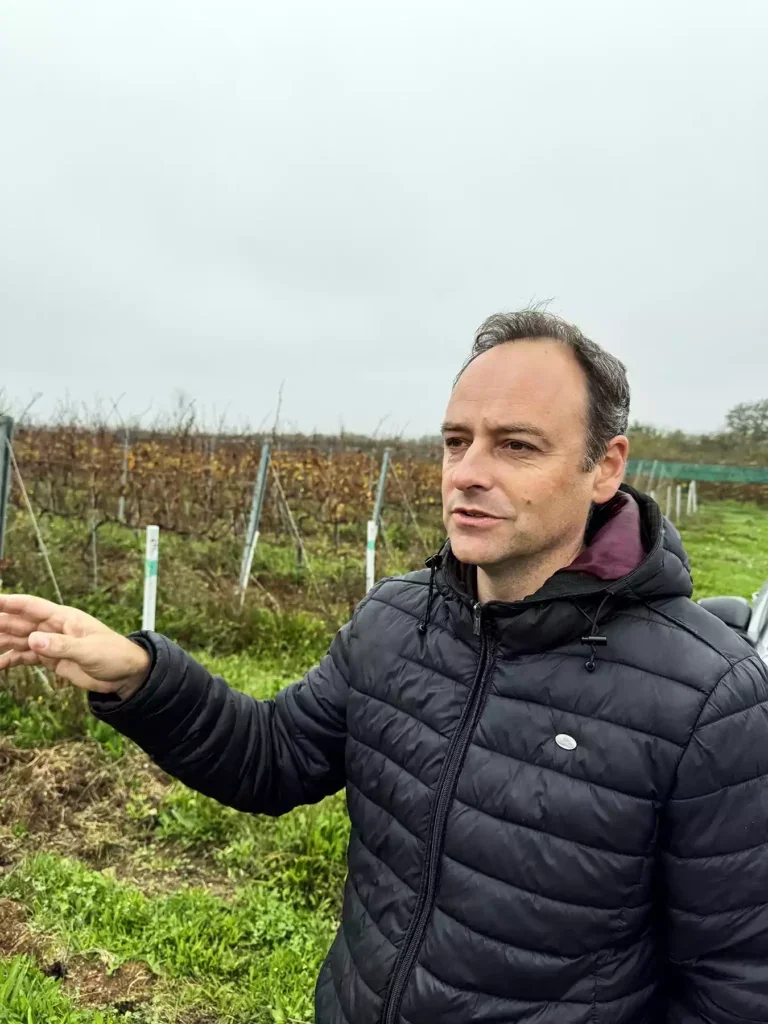
The institute has rightly taken a multipronged approach. In the first instance, its research includes the planting and studying of a wide range of potential grape varieties, preselected for attributes Beaujolais might need in the future. The primary candidates include 120 Gamay clones not yet in wide use or from other regions (including Gamay Gris); familiar grapes used elsewhere, like Syrah, Merlot, Carignan, Nielluccio (Corsica’s version of Sangiovese); and promising crosses like Gamaret, Gaminot, Divico, Granita, Picarlat, Beaugaray, and Marselan. Others include old, traditional reds like Noir Fleurien, Epinou, Dousset, and Mondeuse Grise, plus resistant varieties such as Coliris, Artaban, Vidoc, and Chambourcin. A similar program is focused on a wide range of white grape solutions for Chardonnay.
Beyond testing and analysis of grape selection, they are also focused on adaptive strategies for viticulture, soil management techniques for carbon and water retention, and potential consumer perceptions of these solutions. Clearly, they have a lot on what is becoming an increasingly larger, more complex plate—though a 3D jigsaw puzzle with constantly changing images on each piece seems a more apt metaphor.
Rather than imposing change from the top down, the institute’s long-term strategy on mitigation has been holistic, adaptive, and highly collaborative. Chatelet and Lempereur strongly believe that “Beaujolais can remain within the Gamay family via clones and crosses.” Chatelet thinks “they can keep growing Gamay for 20, 30… 50 years through mitigations, given both Beaujolais and Gamay have such diverse possibilities,” though he admits to having been surprised and challenged by the rapid rate of climate change experienced so far.
Creating a new variety from scratch is neither a quick nor easy process. It can take anywhere from 20 to 25 years or more, including up to five years just to choose two parents, then hand-pollinate and plant newly created seeds (each grape containing seeds with different genetic profiles and cloning potential). After that comes a longer process of bulking up enough vines to produce small-batch wines to test. Ten years of research follows to determine its qualities and possible usage. Isolating and identifying new clones require similar lead times to determine disease resistance, acidity, alcohol, and general characteristics.
So far, SICAREX has created four promising and significant new grape varieties, some having taken 40 years all the way through from inception, to commercial production.
The plan
The plan to mitigate climate change is for vine growers to determine the ultimate outcome of the institute’s experimental processes. SICAREX’s aim has been to create a choice of varieties and viticultural solutions, suggesting the best choices and then turning it over to the growers to decide what will work best for them.
Adaptive regulations laid out in 2018 have also set the stage for new possibilities; for example, allowing 5% of another variety beyond Gamay planted within plots, and 10% blended within cuvées. And so, after a ten-year trial, the growers can decide what they like growing and what they want their wines to smell, taste, and feel like before locking in changes or embarking on new possibilities. Given all the unknowns and variabilities, the program is likely to remain open and ongoing for whatever the future holds.
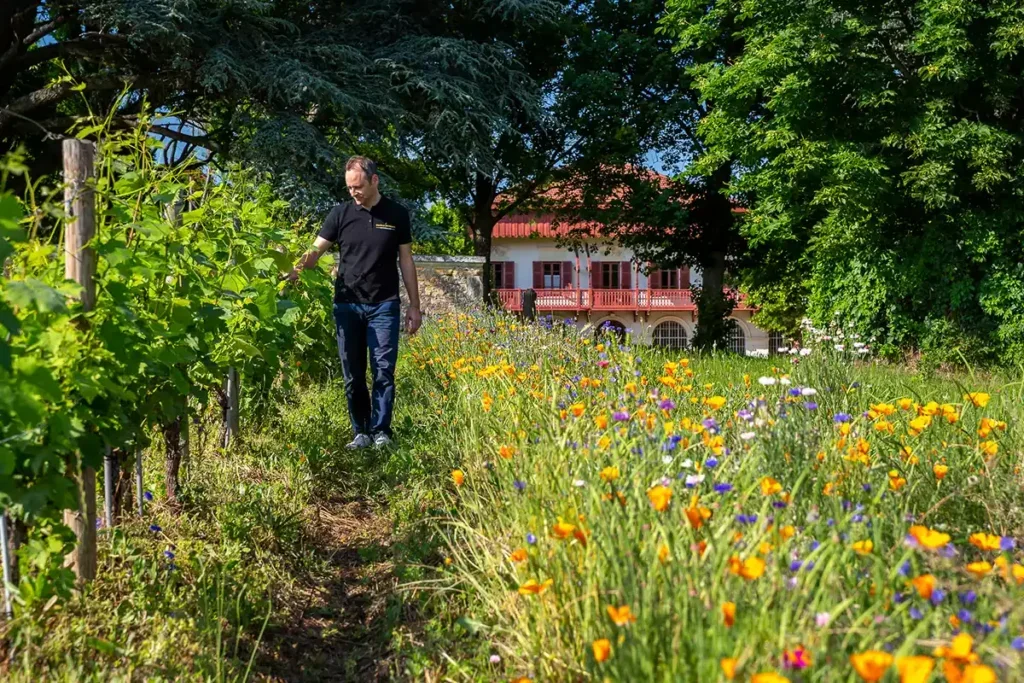
Gamay clones and crosses
SICAREX’s two most promising Gamay clones are 1227 (identified in 2015) and 1170 (identified in 2011). Their own selection, 1227, has a long growing cycle, normally harvesting 15 days later than Beaujolais’s most common clones. Château de L’Éclair Gamay 1227 2022 (14% ABV), from a hot vintage, offered up floral, ripe, red-fruit/red-cherry/black-cherry characters. Although full-bodied, its finely structured tannins and acidity countered any potential alcohol heaviness.
Gamay clone 1170 is a late ripener from the Auvergne, selected specifically for climate mitigation. The 2022 Château de L’Éclair Gamay 1170 was comparatively more dampened aromatically, with blueberry fruits rather than the red fruits of the 1227, fuller-bodied, slicker, and more viscous, but firmer structured and more tannic. Only 12.5% ABV, its ample volume fooled me into thinking that it was more like 13.5–14%.
The institute’s two most promising Gamay-parented grapes are Gamaret and Gaminot. They bottle both commercially, offering a chance to taste several vintages of each alongside one another, with their own Gamay as control.
Gamaret is a 1970s-era Swiss cross with Reichensteiner. An early ripener, with rot and fungal resistance, it leans toward spicy, blackberry-fruit characters and softish, mid-palate tannins. It’s already gained some traction, with several Beaujolais producers bottling their own versions.
Compared to Gamay, Valerie sees Gamaret as “always having more color, less acidity, very level tannins, but [the] sensation is small because [of the wine’s] thickness and volume in mouth.”
Unexpectedly, given the super-hot vintage, the 2020 Gamaret de L’Éclair was 13.5% ABV, compared to the 2020 Gaminot at almost 16%. Quite sweetly fruited, with intense blackberries on the palate, it reminded me of Blaufränkisch but was slicker and more viscous, with softer, less rustic tannins.
The 2022 Gamaret de L’Éclair (13% ABV), from a less hot year, was spicier and more floral, a touch coarser but clean and fresher than the 2020. Tasting it alongside the Gamay, I found the latter more floral, spicier, finer, and much more acidic.
More compelling is SICAREX’s own 1980s crossing of Gamay with Pinot Noir: Gaminot. Officially listed in 2014, it is clearly viewed as an important grape in Beaujolais’s future. Lempereur described it as having the “fruitiness of Gamay and the delicacy of Pinot Noir.” Bertrand tips it as “a wine of the future” that handles “higher alcohol but with good levels of acidity.” So far, SICAREX is the only producer. The three vintages I tasted suggested a wide range of possibilities. The hottest—and perhaps most futuristic—was from a super-hot vintage, the 2020 Gamaret de L’Éclair, with a blazing 15.9% ABV and accompanying ultra-ripe, dried black-fruit characters. Although mouth-filling and broadly structured, it had unexpectedly fine tannins, enough acidity, and quite good length. Most surprisingly, however, there was no perceptible alcoholic burn or whiffy spiritiness; a bit Gamay-gone-Shiraz-ish, but in a good way.
I found the 2018 Gaminot de L’Éclair more agreeable. From a cooler vintage, it was much better balanced, spicier, and more freshly fruited than the 2020; still quite full-bodied, but neatly cut through with fine acidity. A really nice wine.
The 2023 Gaminot de L’Éclair (14% ABV) sat between the two stylistically. Tasted side by side with L’Éclair’s 2023 Gamay, it was spicier, brighter, and more lifted, with red-fruit aromas and flavors. Lighter-bodied, with a slick viscosity, it showed longer, finer-grained tannins. Relatively more transparent and linear than pure Gamay, its Pinot parentage showed through in spades. Again, I wouldn’t have picked it as being anywhere near 14% ABV. A classy wine.
Given a choice between Burgundy’s blended Passetoutgrains and Gaminot, I’d opt for Gaminot, because it seems a more complete, better-balanced, and better-integrated wine than a concoction of Pinot and Gamay.
Tasting Gaminot versus Gamaret, strong differences became very apparent. The former is more Pinot Noir-like aromatically and structurally, the latter more Syrah-like; maybe not bad options, given the regions Beaujolais sits between and possible future transitions.
Other crosses
SICAREX is also working with other crosses, including Picarlat, a 1970s Gamay and Cabernet Sauvignon cross aiming for firm tannins and Gamay fruitiness; Beaugaray, a hybrid between Pinot Noir and Heroldrebe, focused on enhanced aromatics; Divico, a loose-bunched, tough-skinned, black-fruited, Swiss cross of Gamaret and Bronner, bred for resistance to late frosts, powdery and downy mildew, and rot; and Granita, a highly resistant, red-fruited, smooth-textured, high-acid 1980s SICAREX cross between Auxerrois and Blauer Portugieser.
Future-proofing varieties that may help defeat hotter conditions include nearly extinct Noir Fleurien, a vigorous, frost-resistant, low-alcohol variety that likes dry, limestone-rich soils; Epinou, known for its complex aromas and long, late ripening period; and Dousset, from Savoie and also more recently used in Champagne, previously employed as a blender offering enhanced aromas, freshness, and finesse.
The deeper future of these grape varieties may see them gradually blend their way into AOC prominence down the road. The new 5% regulation encourages new plantings, while the 10% blending rule allows them to be gradually absorbed into Gamay bottlings. Alongside this, the Comtés Rhodaniens IGP is flexible enough to allow new 100% varietal bottlings or non-Beaujolais varieties like Syrah and grapes from farther afield. And beyond these material possibilities are inevitable changes to vine growing (yet to be applied to the above-mentioned grape varieties).
Climate change, progress, and reversing into the future
As we are coming to learn that climate change isn’t a simple matter of hotter, drier weather steadily working its way up from the equator to the poles. More and more often it plays out through increasingly complicated chaotic weather conditions that redefine local climates.
Northern Europe’s previously cooler climates, like that in Beaujolais, have seen relative climatic stability supplanted by erratic, sometimes contradictory weather patterns that challenge previous expectations. Sporadic heatwaves and droughts can alternate with unexpectedly intense rain, frost, and/or hail, sometimes all within a single, miserable growing season—or even within a few hours.
One especially vexing new problem is that warmer winters have led into ever-earlier spring bud-break, this suddenly hammered by late spring frosts or hail. Equally worrying have been unprecedented periods of drought, creating heat stress that retards or stops ripening dead in its tracks, sometimes followed with sudden intense rain, and additional hot weather with resultant humidity encouraging mildew and botrytis. Compounding these dangers, new intrusive pests and diseases migrate inward while old ones linger on. Finding solutions to any of these problems is further complicated by the fact that some are in direct conflict with others—the worst of all possible worlds.
Beyond the above hazards, one fundamental aspect of mitigating climate change involves reversing the direction of viticultural progress over the past 50 years. Previously, “progress” focused primarily on overcoming cooler, wetter conditions. Its underlying methodologies grew out of the global “cool climate” movement in the 1980s, initially based around Pinot Noir. Vine growing focused on optimizing ripeness and concentration by diverting vine energy away from leaf and canopy growth into grape and bunch production. Leaf-plucking, shoot-thinning, green-harvesting, bunch-dropping, maximizing sun exposure and ground heat reflection all became standard practices to shorten ripening periods, lower yields, and increase fruit concentration, even in much warmer climates.
Where in the past, lower yields clearly made better wine, increasingly warmer climates may require higher yields to delay ripening, resulting in lower concentration, higher acidity, and less overripe characters. Systematically unraveling the above processes offers the easiest short-term adaptation to a warming world. Where defoliation once ruled, shading will rule from now on.
Toward this end, SICAREX is also experimenting with various forms of trellising, including traditional “California sprawl,” where the untrained canopy grows wild to promote maximum shade and lengthen the ripening. Rows have been reoriented with uneven or staggered vine plantings to reduce direct sun exposure. Ancient, traditional pergola training, strategically placed parasols, and newly installed protective hail-netting will do double duty as shading.
Similarly, the reintroduction of the ancient practice of interplanting trees will increase shade, biodiversity, and water retention, with the added advantage of reducing erosion and encouraging more birds that will eat more bugs. Mulching, use of cover crops and regrafting with growth-inhibitive and water-retentive rootstocks could also be used to help retain water. Another reversal practice is to move low fruiting wires from 24in up to 36in (60cm to 90cm), which lowers heat reflection and increases cooling breezes.
The goal is to combine all these factors toward ongoing solutions. Both Chatelet and Lempereur repeatedly emphasize that this will take years to fine-tune and absorb all the ongoing mitigation strategies.
Geology: Beaujolais’s wild card
It’s not widely known that Beaujolais contains some of the most geologically complex terroir in the world. Recognized as a UNESCO Global Geopark, the region has more than 300 distinct types of soil, dating back 500 million years.
Based on Inter Beaujolais’s intensive soil-mapping research, done almost on a plot-by-plot basis between 2009 and 2018, this hard scientific data creates new possibilities for understanding the 12 Beaujolais crus and how terroir might play into its climatic strategies.
Beaujolais’s terroir is generally somewhat oversimplified as being evenly divided between the granite-dominant northern village crus and the subregional southern crus with their limestone-clay mixes. In fact, both of those appear—along with schist, volcanic, alluvial, and many other soil mixtures—throughout all regions. Mont Brouilly, for example, has five major stone-derived soils, some sitting alone, others side by side, still others mixed within myriad fans and transitions throughout vineyards—all playing out differently from top to bottom of this highly weathered old mountain.
Add in similar hillside slopes throughout Beaujolais with elevations of between 650 and 1,950ft (200–600m) and a wide variety of sun exposure and shading possibilities, and Beaujolais clearly has a lot to experiment with when it comes to countering climate change in the future.
All this suggests unlimited potential to slot in new Gamay clones, Gamay family varieties, or entirely different grapes, each one allied to newly conceived viticultural solutions and linked to specific soil plots. What might not work on one side of a hill may be perfect for another. Or farther up or down the slope.
Obviously, it is early days to speculate on how terroir will play into climate change, given that clones and crosses still need to be better understood and expanded, viticultural solutions refined and implemented, before all these can be predictably applied to specific terroir solutions. Nevertheless, from the perspective of now, these permutations seem almost endless.
What becomes more important—dirt or the grape variety? What happens when you can’t have one without the other? Will crus focus on their terroir’s new potentials or stick within the Gamay family for as long as they can? Better to jump ship? Or to stretch Gamay to its limits, blending in advantageous portions of clones and crosses to make up for what Gamay continually loses?
What of the old, historically derived village descriptors? Will Morgon maintain its minerally, firmly structured, long-lived reputation; Chirouble its floral characters; Juliénas its bright fruitiness; Fleurie its spice; Brouilly its fruity depth…? Will the warmest, earliest-ripening cru be the first to give up on Gamay and opt for a later-ripening grape? If so, how soon?
It will be intriguing to see how specific crus evolve over the coming decades. Will some disappear as new ones emerge? Will Gamay eventually move on to conquer Romanée-Conti, and Syrah have found new “roasted slopes” at Morgon, both waiting for Grenache to make its next move northward?
Only time will tell.


